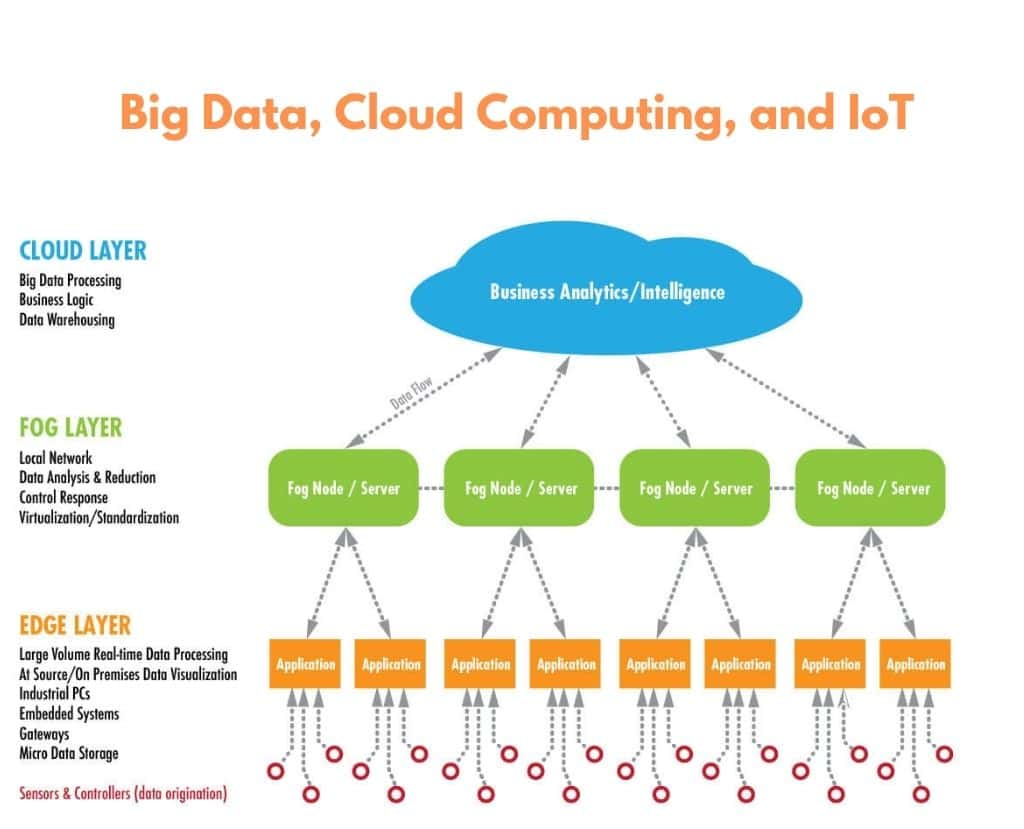Unveiling the Power of Data Analytics in the Cloud
The era of big data has brought about a paradigm shift in the way businesses operate, enabling them to make informed decisions based on data-driven insights. Big data analytics in the cloud ecosystem has emerged as a powerful tool, offering unparalleled scalability, cost-effectiveness, and accessibility. This technology allows organizations to process and analyze vast amounts of data, harnessing the power of the cloud to unlock valuable insights and drive innovation.
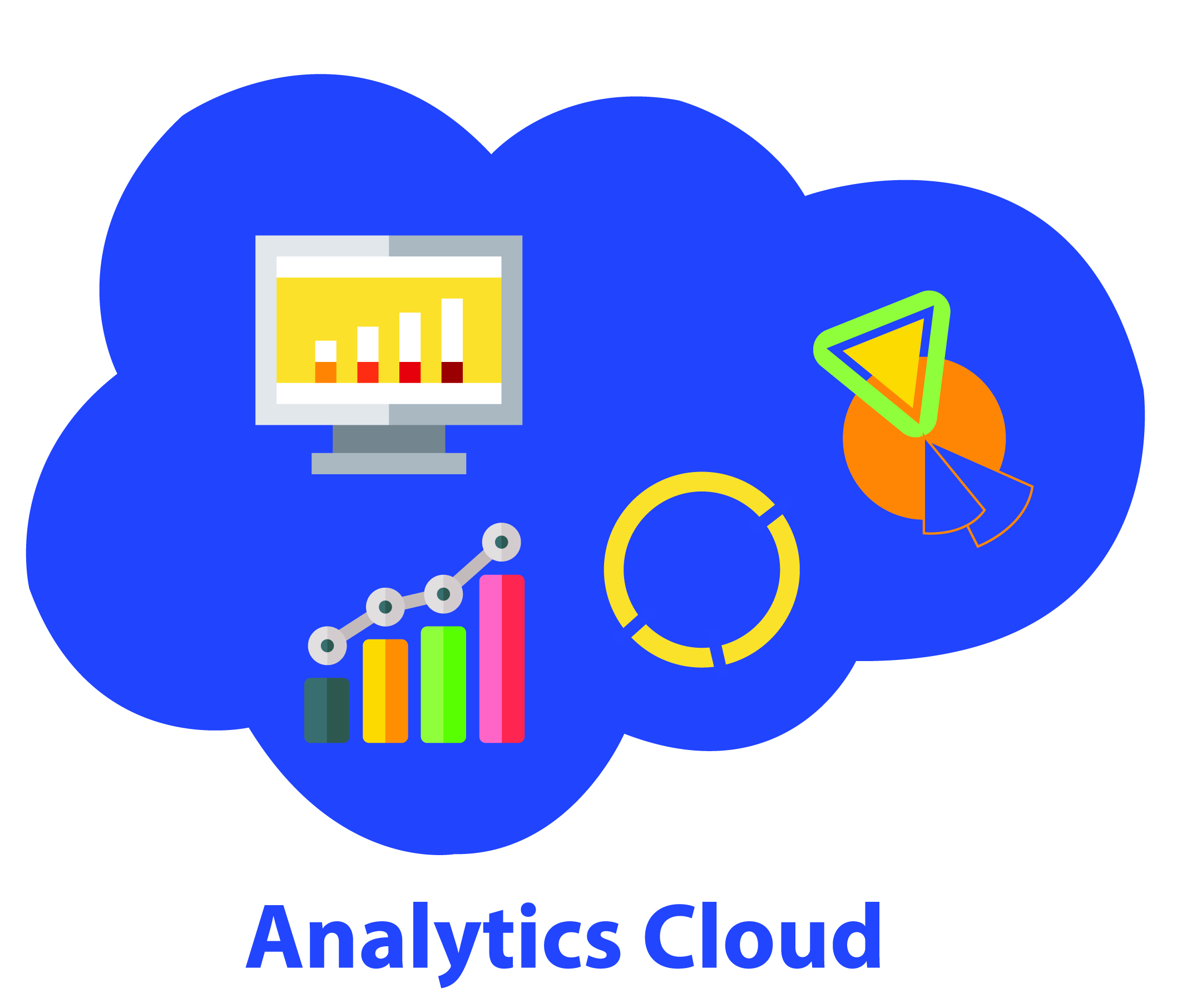
Big Data Analytics Tools and Platforms in the Cloud
The rapid growth of big data analytics in the cloud ecosystem has led to the development of numerous tools and platforms designed to simplify and optimize data processing and analysis. These solutions offer a wide range of features and capabilities, enabling organizations to harness the power of big data analytics in the cloud.
Amazon S3 (Simple Storage Service) is a popular cloud-based storage solution that allows users to store and retrieve large volumes of data. Amazon S3 is often used in conjunction with other Amazon Web Services (AWS) tools, such as Amazon Redshift and Amazon Kinesis, to create a comprehensive big data analytics platform. With its robust security features and flexible pricing model, Amazon S3 is an ideal choice for organizations seeking a scalable and cost-effective storage solution.
Google BigQuery is a serverless, fully-managed data warehouse that enables users to analyze vast amounts of data using SQL-like queries. BigQuery is designed to handle petabyte-scale datasets, making it an excellent option for big data analytics in the cloud. Additionally, Google BigQuery integrates seamlessly with other Google Cloud Platform tools, such as Google Cloud Dataflow and Google Cloud Storage, providing a powerful and flexible big data analytics ecosystem.
Microsoft Azure is a comprehensive cloud platform that offers a wide range of big data analytics tools and services. Azure’s offerings include Azure Data Lake Storage, a scalable and secure data lake solution, and Azure Databricks, a fast, easy, and collaborative Apache Spark-based analytics platform. Microsoft Azure also provides robust machine learning and artificial intelligence capabilities, making it an ideal choice for organizations seeking an all-in-one big data analytics solution.
Other notable big data analytics tools and platforms in the cloud ecosystem include IBM Cloud, Cloudera Data Platform, and Snowflake. Each of these solutions offers unique features and capabilities, enabling organizations to tailor their big data analytics environments to their specific needs and requirements.
How to Implement Big Data Analytics in the Cloud Ecosystem
Implementing big data analytics in the cloud ecosystem can be a complex and challenging process, but it offers numerous benefits, including scalability, cost-effectiveness, and accessibility. By following a step-by-step process, organizations can successfully implement big data analytics in the cloud and begin reaping the rewards of this powerful technology.
The first step in implementing big data analytics in the cloud is data ingestion. This involves collecting and transmitting data from various sources, such as databases, applications, and devices, to a cloud-based storage solution. Data ingestion can be achieved using a variety of tools and techniques, including Apache Kafka, Amazon Kinesis, and Google Cloud Dataflow. It is essential to choose a data ingestion solution that is scalable, reliable, and capable of handling large volumes of data in real-time.
Once the data has been ingested, it must be stored in a cloud-based data lake or data warehouse. This involves organizing and categorizing the data, making it easily accessible for processing and analysis. Popular cloud-based storage solutions for big data analytics include Amazon S3, Google BigQuery, and Microsoft Azure. These solutions offer robust security features, flexible pricing models, and seamless integration with other big data analytics tools and platforms.
The next step in implementing big data analytics in the cloud is data processing. This involves cleaning, transforming, and aggregating the data to prepare it for analysis. Data processing can be achieved using a variety of tools and techniques, including Apache Spark, Apache Flink, and Google Cloud Dataproc. It is essential to choose a data processing solution that is scalable, fault-tolerant, and capable of handling large volumes of data in real-time.
Once the data has been processed, it is ready for analysis. This involves using big data analytics tools and platforms, such as Apache Hive, Apache Pig, and Google BigQuery, to extract insights and intelligence from the data. Data visualization tools, such as Tableau, Power BI, and Looker, can be used to present the data in a clear and concise manner, making it easy to understand and interpret.
In conclusion, implementing big data analytics in the cloud ecosystem involves a series of well-defined steps, including data ingestion, storage, processing, and visualization. By following this process, organizations can successfully implement big data analytics in the cloud and begin leveraging the power of data analytics to drive business growth and success.

Real-World Applications of Big Data Analytics in the Cloud
Big data analytics in the cloud ecosystem has become increasingly popular in recent years, with many industries leveraging its power to drive business growth and success. By analyzing large volumes of data in real-time, organizations can gain valuable insights and intelligence that can be used to improve decision-making, customer experience, and operational efficiency.
One industry that has embraced big data analytics in the cloud is healthcare. By analyzing patient data, healthcare providers can gain a better understanding of disease patterns, treatment outcomes, and patient behavior. This can be used to develop personalized treatment plans, improve patient outcomes, and reduce healthcare costs. For example, Cerner, a leading provider of healthcare information technology solutions, uses Amazon Web Services (AWS) to analyze large volumes of healthcare data in real-time. This allows Cerner to provide healthcare providers with actionable insights that can be used to improve patient care.
Another industry that is leveraging big data analytics in the cloud is retail. By analyzing customer data, retailers can gain a better understanding of customer behavior, preferences, and buying patterns. This can be used to develop targeted marketing campaigns, improve customer engagement, and increase sales. For example, Ocado, a leading online grocery retailer, uses Google Cloud Platform (GCP) to analyze large volumes of customer data in real-time. This allows Ocado to provide personalized recommendations and offers to customers, improving their shopping experience and increasing sales.
The financial services industry is also using big data analytics in the cloud to improve fraud detection and prevention. By analyzing transaction data in real-time, financial institutions can detect suspicious activity and prevent fraudulent transactions. For example, Wells Fargo, a leading financial services company, uses Microsoft Azure to analyze large volumes of transaction data in real-time. This allows Wells Fargo to detect and prevent fraudulent transactions, improving customer trust and reducing losses.
In conclusion, big data analytics in the cloud ecosystem has numerous real-world applications across various industries. By analyzing large volumes of data in real-time, organizations can gain valuable insights and intelligence that can be used to improve decision-making, customer experience, and operational efficiency. From healthcare to retail to financial services, big data analytics in the cloud is transforming the way businesses operate and compete in today’s data-driven world.
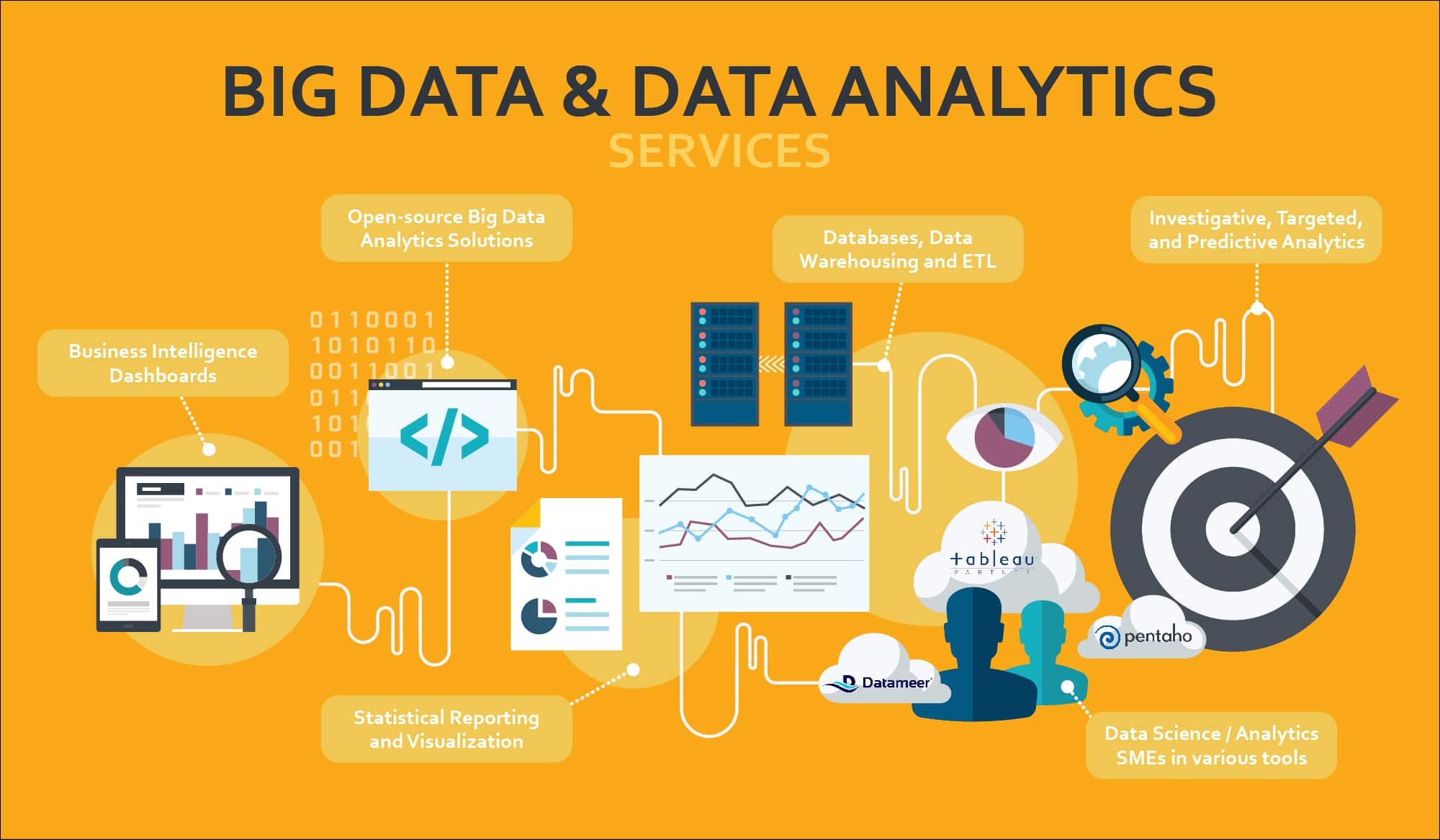
Challenges and Best Practices for Big Data Analytics in the Cloud
While big data analytics in the cloud ecosystem offers numerous benefits, it also presents several challenges that organizations must overcome to ensure successful implementation. In this section, we will explore some of the most common challenges and provide best practices to overcome them.
One of the biggest challenges of implementing big data analytics in the cloud is data security. With the increasing amount of data being stored and processed in the cloud, the risk of data breaches and cyber attacks has also increased. To mitigate this risk, organizations must implement robust data encryption, access controls, and compliance with data protection regulations. It is also essential to choose a cloud provider that prioritizes security and offers advanced security features such as multi-factor authentication, network segmentation, and intrusion detection systems.
Another challenge is data integration. With data coming from various sources, formats, and structures, integrating and cleaning the data can be a complex and time-consuming process. To overcome this challenge, organizations can use data integration tools and platforms that automate the data integration process and provide data cleansing and transformation capabilities. It is also essential to establish data governance policies and procedures to ensure data quality and consistency.
Scalability is another challenge that organizations must consider when implementing big data analytics in the cloud. As the volume of data grows, the cloud infrastructure must be able to scale up or down to meet the demands of the analytics workload. To ensure scalability, organizations can use cloud-native big data analytics tools and platforms that offer auto-scaling and elastic computing capabilities. It is also essential to monitor the cloud infrastructure and analytics workload continuously to optimize resource allocation and cost.
To overcome these challenges, organizations can follow these best practices:
- Establish a clear big data analytics strategy and roadmap that aligns with business objectives and goals.
- Choose a cloud provider that offers robust security features, scalable infrastructure, and advanced analytics capabilities.
- Implement data encryption, access controls, and compliance with data protection regulations to ensure data security.
- Use data integration tools and platforms to automate the data integration process and ensure data quality and consistency.
- Monitor the cloud infrastructure and analytics workload continuously to optimize resource allocation and cost.
- Establish data governance policies and procedures to ensure data quality and consistency.
- Provide training and support to users and stakeholders to ensure successful adoption and use of big data analytics in the cloud.
In conclusion, implementing big data analytics in the cloud ecosystem presents several challenges that organizations must overcome to ensure successful implementation. By following best practices such as establishing a clear strategy, choosing a secure and scalable cloud provider, implementing data encryption and integration tools, and monitoring the cloud infrastructure and analytics workload, organizations can overcome these challenges and leverage the power of big data analytics in the cloud for improved decision-making, customer experience, and operational efficiency.

Security and Privacy Considerations for Big Data Analytics in the Cloud
As big data analytics in the cloud ecosystem becomes increasingly popular, security and privacy concerns have become more critical than ever. With the vast amounts of sensitive data being stored and processed in the cloud, organizations must ensure that they have robust security measures in place to protect against data breaches and cyber attacks. In this section, we will address security and privacy concerns related to big data analytics in the cloud and provide best practices to ensure data protection.
Data encryption is one of the most critical security measures for protecting data in the cloud. Encryption ensures that data is unreadable and unusable to unauthorized users, even if they gain access to the data. Organizations can use encryption at rest, which encrypts data when it is stored in the cloud, and encryption in transit, which encrypts data when it is transmitted between the cloud and the user’s device. It is also essential to use strong encryption algorithms and keys to ensure maximum security.
Access controls are another essential security measure for protecting data in the cloud. Access controls ensure that only authorized users have access to the data and that they have the appropriate level of access based on their role and responsibilities. Organizations can use role-based access control (RBAC) or attribute-based access control (ABAC) to manage access to data in the cloud. RBAC assigns access rights based on a user’s role, while ABAC assigns access rights based on a user’s attributes, such as their department, location, or job function.
Compliance with data protection regulations is also critical for organizations that use big data analytics in the cloud. Data protection regulations, such as the General Data Protection Regulation (GDPR) and the California Consumer Privacy Act (CCPA), require organizations to protect the privacy of individuals’ personal data and provide them with certain rights regarding their data. Organizations must ensure that they comply with these regulations when using big data analytics in the cloud, which may involve implementing additional security measures, such as data anonymization and pseudonymization, and providing users with the ability to opt-out of data collection and processing.
To ensure security and privacy in big data analytics in the cloud, organizations can follow these best practices:
- Implement robust data encryption, access controls, and compliance with data protection regulations.
- Choose a cloud provider that prioritizes security and offers advanced security features such as multi-factor authentication, network segmentation, and intrusion detection systems.
- Regularly monitor the cloud infrastructure and analytics workload for security threats and vulnerabilities.
- Provide training and awareness programs to users and stakeholders on security and privacy best practices.
- Establish data governance policies and procedures to ensure data quality and consistency.
- Conduct regular security audits and assessments to ensure compliance with data protection regulations and industry standards.
In conclusion, security and privacy are critical considerations for organizations that use big data analytics in the cloud ecosystem. By implementing robust data encryption, access controls, and compliance with data protection regulations, organizations can ensure the security and privacy of their data and protect against data breaches and cyber attacks. It is also essential to choose a cloud provider that prioritizes security and offers advanced security features, regularly monitor the cloud infrastructure and analytics workload for security threats and vulnerabilities, and provide training and awareness programs to users and stakeholders on security and privacy best practices.
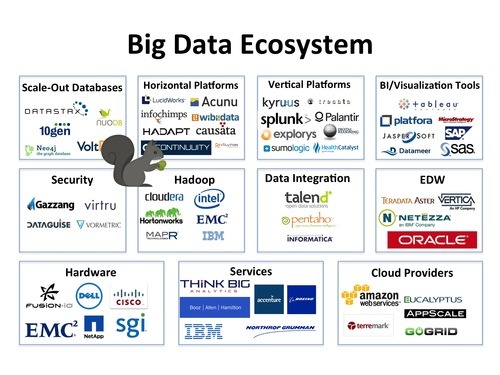
The Future of Big Data Analytics in the Cloud Ecosystem
The world of big data analytics in the cloud ecosystem is constantly evolving, and new trends and developments are emerging all the time. In this section, we will discuss some of the most exciting and innovative trends in big data analytics in the cloud ecosystem, including artificial intelligence, machine learning, and the Internet of Things (IoT).
Artificial intelligence (AI) is one of the most significant trends in big data analytics in the cloud ecosystem. AI enables machines to learn from data and make decisions based on that learning. AI can be used in a variety of applications, such as natural language processing, image recognition, and predictive analytics. By using AI in big data analytics in the cloud ecosystem, organizations can gain deeper insights into their data and make more informed decisions.
Machine learning (ML) is another critical trend in big data analytics in the cloud ecosystem. ML is a subset of AI that enables machines to learn from data without being explicitly programmed. ML can be used in a variety of applications, such as predictive analytics, fraud detection, and customer segmentation. By using ML in big data analytics in the cloud ecosystem, organizations can automate data analysis and gain more accurate insights into their data.
The Internet of Things (IoT) is a network of physical devices, vehicles, and other objects that are embedded with sensors, software, and other technologies to connect and exchange data. IoT is a significant trend in big data analytics in the cloud ecosystem because it generates vast amounts of data that can be analyzed to gain insights into customer behavior, operational efficiency, and other critical business metrics. By using IoT in big data analytics in the cloud ecosystem, organizations can gain real-time insights into their data and make more informed decisions.
To take advantage of these trends in big data analytics in the cloud ecosystem, organizations should consider the following best practices:
- Invest in AI and ML technologies to automate data analysis and gain deeper insights into data.
- Implement IoT solutions to generate real-time data and gain insights into customer behavior and operational efficiency.
- Ensure that data is stored and processed in a secure and compliant manner to protect against data breaches and cyber attacks.
- Choose a cloud provider that offers advanced AI, ML, and IoT capabilities and provides robust security and compliance features.
- Regularly monitor the cloud infrastructure and analytics workload for security threats and vulnerabilities.
- Provide training and awareness programs to users and stakeholders on AI, ML, and IoT best practices.
In conclusion, the future of big data analytics in the cloud ecosystem is exciting and full of potential. By investing in AI, ML, and IoT technologies, organizations can gain deeper insights into their data and make more informed decisions. It is essential to ensure that data is stored and processed in a secure and compliant manner and to choose a cloud provider that offers advanced AI, ML, and IoT capabilities. By following these best practices, organizations can take advantage of the latest trends in big data analytics in the cloud ecosystem and gain a competitive advantage in their industry.
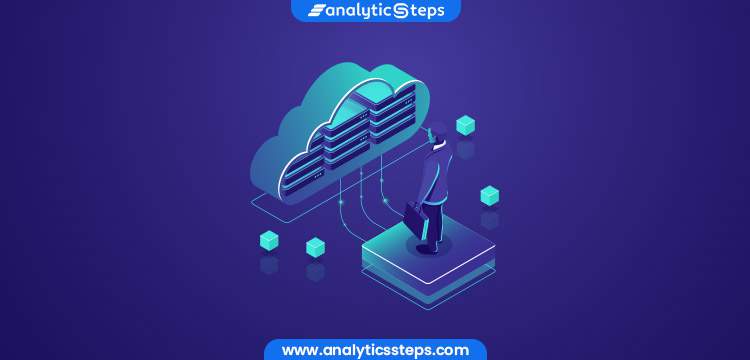
Selecting the Right Cloud Provider for Big Data Analytics
When it comes to implementing big data analytics in the cloud ecosystem, choosing the right cloud provider is a critical decision. The right cloud provider can offer the necessary tools, platforms, and infrastructure to support big data analytics, while the wrong one can lead to a host of challenges and issues. In this section, we will provide guidance on how to choose the right cloud provider for big data analytics, considering factors such as cost, scalability, security, and support.
First and foremost, it is essential to consider the cost of the cloud provider’s services. Different cloud providers offer different pricing models, and it is essential to choose one that fits within your budget. However, cost should not be the only factor to consider. It is also essential to consider the scalability of the cloud provider’s infrastructure. As your big data analytics needs grow, you will need a cloud provider that can scale up to meet those needs. Look for a cloud provider that offers flexible pricing models and the ability to scale up or down as needed.
Security is another critical factor to consider when choosing a cloud provider for big data analytics. It is essential to choose a cloud provider that offers robust security features, such as data encryption, access controls, and compliance with data protection regulations. Look for a cloud provider that has a strong track record of protecting customer data and has implemented best practices for data security and privacy.
Support is also an essential factor to consider when choosing a cloud provider for big data analytics. Look for a cloud provider that offers 24/7 support and has a team of experts available to help you with any issues or questions that arise. Additionally, look for a cloud provider that offers training and education resources to help you get the most out of their big data analytics tools and platforms.
When evaluating cloud providers for big data analytics, consider the following best practices:
- Compare pricing models and choose a cloud provider that offers flexible pricing and the ability to scale up or down as needed.
- Ensure that the cloud provider offers robust security features, such as data encryption, access controls, and compliance with data protection regulations.
- Look for a cloud provider that offers 24/7 support and has a team of experts available to help with any issues or questions.
- Evaluate the cloud provider’s track record in protecting customer data and implementing best practices for data security and privacy.
- Consider the cloud provider’s experience in working with big data analytics and their ability to provide the necessary tools and platforms to support your needs.
In conclusion, choosing the right cloud provider for big data analytics is a critical decision that requires careful consideration. By evaluating factors such as cost, scalability, security, and support, you can choose a cloud provider that meets your needs and supports your big data analytics goals. Remember to compare pricing models, ensure robust security features, look for 24/7 support, evaluate the cloud provider’s track record in protecting customer data, and consider their experience in working with big data analytics. By following these best practices, you can choose a cloud provider that will help you unlock the full potential of big data analytics in the cloud ecosystem.
